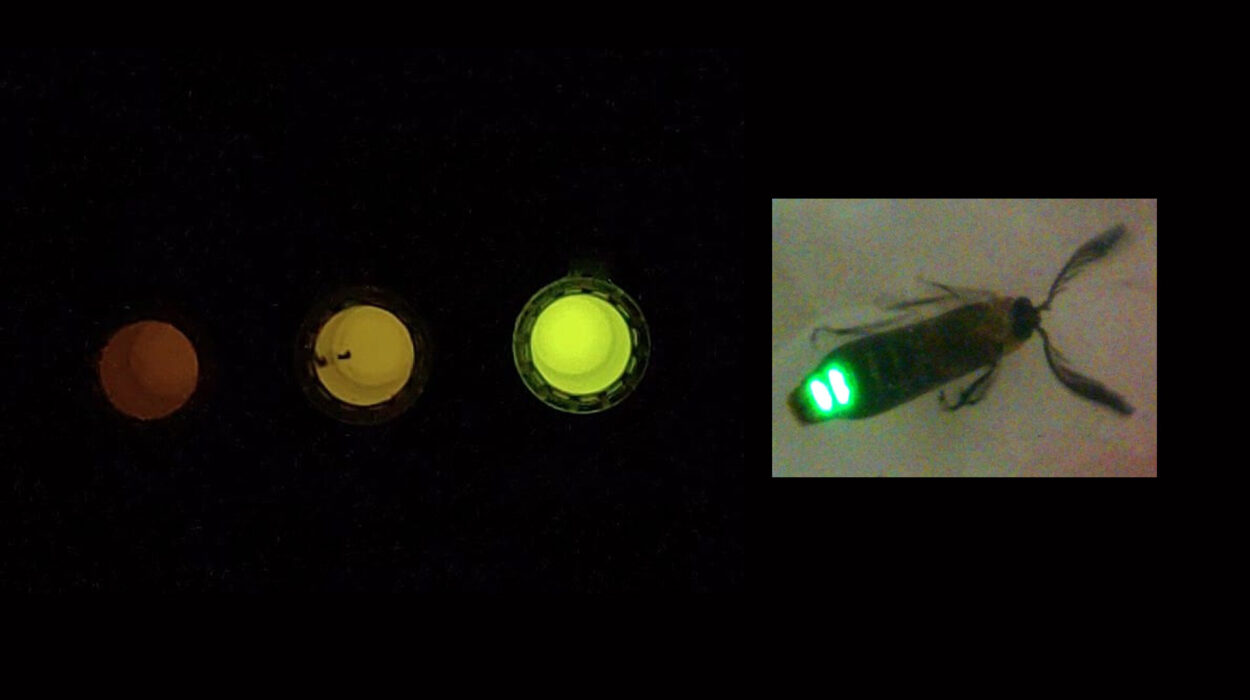As we walk through forests, sail across oceans, or sit in a quiet meadow, we often imagine nature as serene and silent. Birds chirp, dogs bark, elephants trumpet—but beyond these sounds that reach human ears lies a vast, unseen orchestra of communication. Animals are speaking constantly, trading messages of survival, courtship, danger, and cooperation in ways we cannot hear. They hum in frequencies too low for us to feel, whistle in tones too high for us to detect, and even send messages through vibrations and chemical signals that our senses barely register.
For millennia, humans believed they were the planet’s great communicators, masters of language and sound. Yet as science delves deeper into the biology of communication, we are discovering that other species inhabit sensory worlds vastly different from our own. They whisper, rumble, click, and shimmer in channels that bypass human perception entirely. These hidden dialogues remind us that life on Earth is far more interconnected, intelligent, and mysterious than we once imagined.
The Physics of Silence: Why We Can’t Hear Everything
The human ear is a marvel of evolution, tuned to detect sounds between roughly 20 hertz and 20,000 hertz. This range allows us to hear conversations, music, and most environmental cues needed for survival. But sound is a physical wave, and its frequencies extend far beyond human limits. Many animals exploit these unheard dimensions of sound for communication.
Low-frequency sounds, called infrasound, can travel immense distances, vibrating through the ground and air with little loss of energy. High-frequency sounds, known as ultrasound, allow pinpoint accuracy in navigation and signaling. Our ears are deaf to these extremes, not because they are rare, but because evolution never needed us to hear them. To perceive the world as a bat or elephant does would be to inhabit an entirely different sonic reality—a universe we cannot imagine without the tools of modern science.
Elephants: The Rumbles of Giants
In the dusty savannas of Africa and the dense forests of Asia, elephants carry on conversations humans cannot hear. They produce infrasound vocalizations as low as 14 hertz—well below our hearing threshold—that roll like distant thunder. These sounds can travel through the ground for miles, detectable by the sensitive feet and trunks of other elephants.
Scientists discovered this secret language only a few decades ago. By placing microphones capable of recording infrasound near elephant herds, researchers captured deep rumbles exchanged between individuals separated by several kilometers. These rumbles are not mere background noise; they are messages of coordination and connection. Elephants use infrasound to summon distant companions, alert the herd to danger, and even signal mating readiness.
The discovery transformed our understanding of elephant society. What once seemed like silent, isolated giants revealed itself as a tightly knit network of communication, pulsing through the earth itself. To walk among elephants is to stand amid a chorus of seismic whispers no human can naturally hear.
Whales: Songs Beneath the Ocean’s Skin
Beneath the waves, whales sing symphonies that ripple across entire ocean basins. Blue whales, the largest creatures on Earth, produce calls as low as 10 hertz, resonating through water with extraordinary reach. A single whale’s song can be detected hundreds, even thousands, of miles away by other whales.
Humpback whales, famed for their complex melodies, craft songs that last up to 30 minutes, rich with patterns and themes that evolve over time. These vocalizations, some audible to humans and others too deep or subtle, likely serve purposes beyond mating or territory. Some scientists believe they create acoustic maps of the ocean, guiding whales across migrations thousands of miles long.
Our understanding of whale communication deepens with each decade. Acoustic research has revealed that pods of sperm whales use distinctive clicking patterns—sometimes called “codas”—to identify themselves, akin to names or family crests. Dolphins, their smaller cousins, employ ultrasonic whistles to maintain intricate social bonds. To these marine mammals, the ocean is not silent; it is alive with an elaborate web of communication that only advanced technology allows us to glimpse.
Bats: The Ultrasonic Navigators
When dusk falls and bats take to the night skies, they emit a barrage of ultrasonic pulses far beyond human hearing. These sounds, reaching frequencies of 100,000 hertz or more, bounce off objects, returning echoes that bats interpret with astonishing precision. Echolocation allows them to navigate in total darkness, detect prey as small as a mosquito, and avoid obstacles at speeds that seem impossible.
But these ultrasonic sounds are not just navigational tools—they are also a rich language. Studies show bats modify their calls to avoid sonar interference with nearby bats, a behavior akin to humans adjusting conversation in a noisy room. Some species even produce specialized social calls during mating, warning, or cooperative hunting.
If humans could hear the night through bat ears, it would not be silent but a rapid-fire conversation of clicks and chirps, a high-speed dialogue mapping an invisible world.
Frogs and Insects: Vibrations Through the Earth
Communication is not always carried by sound waves in air. Many animals, from tiny insects to amphibians, send messages through the very substrate they stand upon. Frogs produce low-frequency calls that resonate through water and ground, attracting mates or deterring rivals without alerting predators.
Certain species of spiders and insects tap out vibrational signals on leaves and branches. Treehoppers, for example, drum on plant stems, creating patterns detected by others through their feet. These seismic songs are crucial for finding mates and coordinating group behaviors. Humans often miss these conversations entirely because they lack the sensitivity to feel such minute vibrations without instruments.
Fish and the Language of Electric Fields
Beneath rivers and seas, where visibility can be nearly zero, some fish rely on electric fields to communicate. Species like the African weakly electric fish generate electric pulses detectable by others of their kind. Each fish has a unique electrical “signature,” allowing individuals to recognize neighbors, establish dominance, or signal reproductive readiness.
These signals operate in frequencies undetectable to humans without specialized sensors. In the murky waters where sound and sight fail, electricity becomes a silent, invisible language shaping complex social interactions.
Bees and the Dances of Light and Vibration
Even in the insect world, communication transcends human hearing. Honeybees famously perform the “waggle dance,” a series of movements conveying the direction and distance of nectar sources. But beneath the visible dance lies a layer of vibrational signals transmitted through the hive’s wax comb. These vibrations, imperceptible to human ears, guide colony behavior with astonishing efficiency.
Bees also use polarized light patterns, invisible to us, as part of their navigation and communication. Their world is encoded not in words or sounds but in subtle shifts of light and tremors, messages we cannot naturally perceive.
The Role of Chemical Communication
Sound and vibration are only part of the story. Many animals, particularly insects, rely heavily on chemical signals called pheromones to communicate. Ants lay invisible scent trails guiding others to food. Moths release airborne pheromones that can attract mates from kilometers away.
Humans do emit and detect some chemical cues subconsciously, but compared to other animals, our abilities are limited. For many species, chemical language is primary, conveying information about territory, reproduction, danger, and social hierarchy silently yet powerfully.
Evolutionary Advantages of Hidden Communication
Why have so many species evolved ways to communicate beyond human hearing? One reason is survival. Infrasound and ultrasound can travel in environments where normal sounds fail—low frequencies moving through vast savannas or deep oceans, high frequencies slicing through cluttered forests or darkness.
Hidden channels also help avoid predators or eavesdroppers. By speaking in frequencies undetectable to most animals, species can coordinate safely and secretly. Additionally, specialized communication enables intricate social behaviors—from elephant matriarchs guiding herds to dolphin pods coordinating hunts—that require reliable, long-distance signaling.
These adaptations highlight a fundamental truth of evolution: every species perceives and interacts with reality in ways shaped by its environment and survival needs. What seems silent or invisible to us may be a bustling conversation for others.
The Technology Unlocking Nature’s Secrets
For centuries, these silent communications went unnoticed. Only with modern technology have we begun to reveal them. Infrasound recorders, ultrasonic detectors, hydrophones, and vibration sensors now allow scientists to eavesdrop on the hidden languages of animals.
These tools have not only uncovered new behaviors but transformed conservation efforts. Understanding whale songs has led to changes in shipping routes to reduce collisions. Monitoring elephant rumbles helps track migration and prevent poaching. Even subtle insect vibrations are being studied to improve crop protection and ecosystem management.
Every discovery reminds us that we inhabit a shared planet brimming with unseen connections. The more we listen with machines, the more we realize how little we naturally perceive.
Beyond Human Language: The Limits of Our Senses
Human language is extraordinary, yet it is only one mode of communication among countless others. Our species is bound by sensory limitations—narrow ranges of hearing, vision, and smell—that filter reality into a human-sized experience.
Animals are not constrained by these limits in the same way. They inhabit sensory worlds shaped by millions of years of evolution, worlds where hearing extends into seismic rumbles or ultrasonic whispers, where vision sees polarized light, where communication travels through chemicals or electric currents.
This concept, called the “umwelt,” describes the subjective sensory reality of each species. Understanding animal communication requires stepping outside our human umwelt, imagining the Earth not as we perceive it, but as it truly is: a living network of messages flowing through channels we rarely detect.
The Poetry of Unheard Voices
Though science gives us tools to detect infrasound, ultrasound, vibrations, and chemicals, much of the beauty of these communications lies in their mystery. To imagine elephants speaking through the ground, whales sending love songs across oceans, or bats painting landscapes with echoes is to glimpse a reality richer than human senses can hold.
Our inability to hear these voices does not make them silent. It simply means they belong to a broader, more intricate symphony of life. By acknowledging this, we not only expand our understanding of biology but deepen our sense of wonder and humility as members of Earth’s community.
Toward a Deeper Connection with Nature
Recognizing these hidden languages challenges us to see animals not as silent beings but as articulate participants in complex societies. Conservation is no longer just about protecting habitats but preserving the channels of communication vital to species survival.
From the seismic conversations of elephants to the electric signals of fish, every whisper we uncover strengthens the bond between humans and the natural world. As technology allows us to listen more closely, we may find that understanding these unheard voices teaches us more than science alone—it teaches us empathy, respect, and the profound interconnectedness of life.
In the end, the silence we perceive in nature is an illusion. The planet hums with endless conversations, unfolding in frequencies and forms we are only beginning to comprehend. To truly hear the Earth, we must go beyond our human senses, embracing the astonishing truth that life communicates in ways far greater than our ears can perceive.






